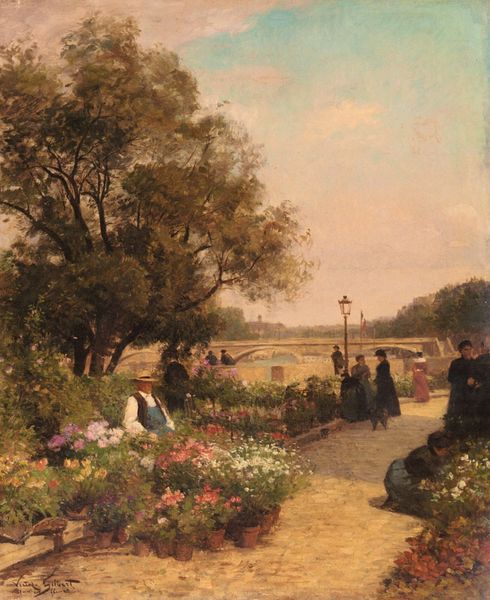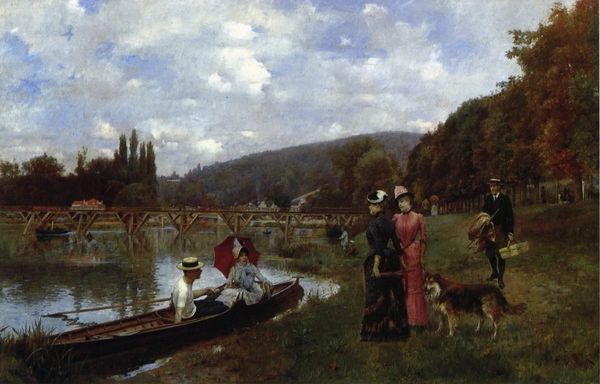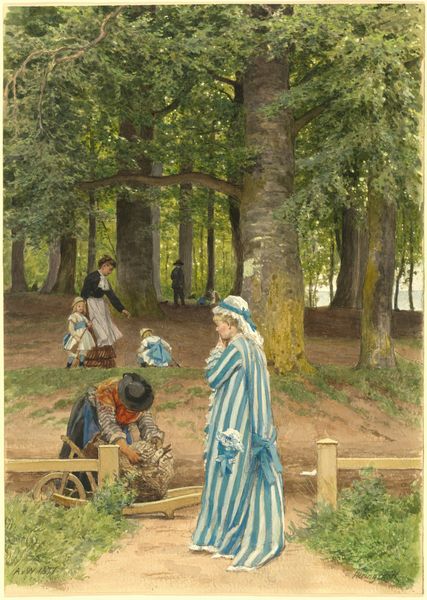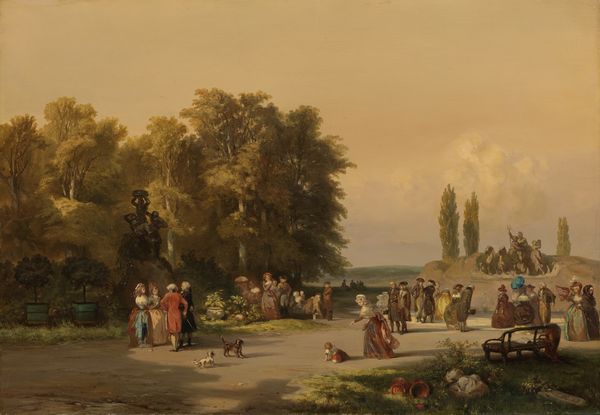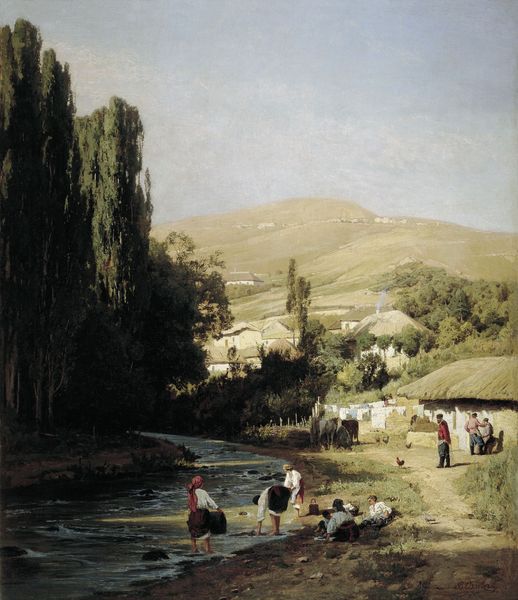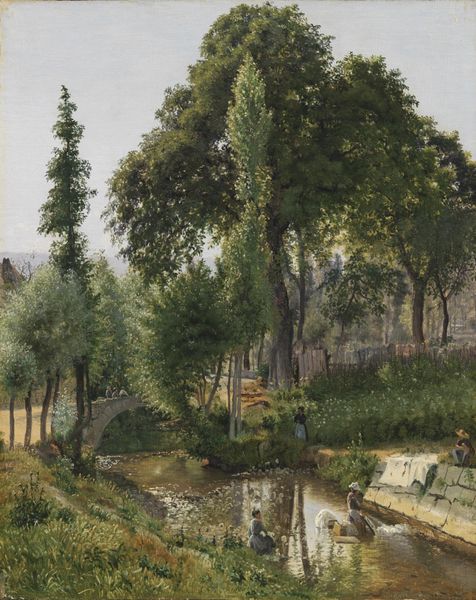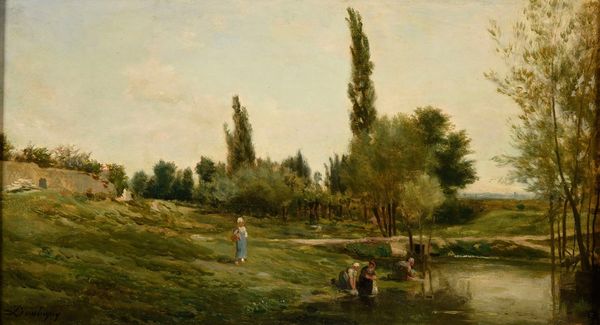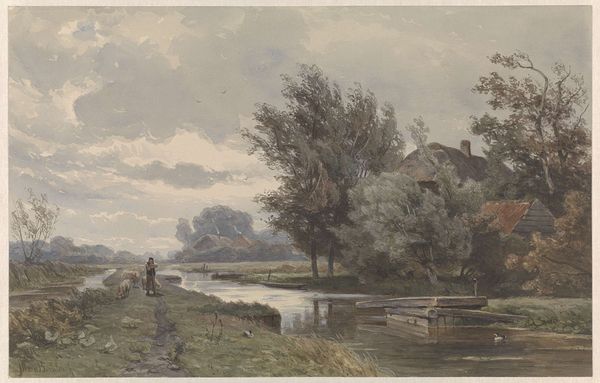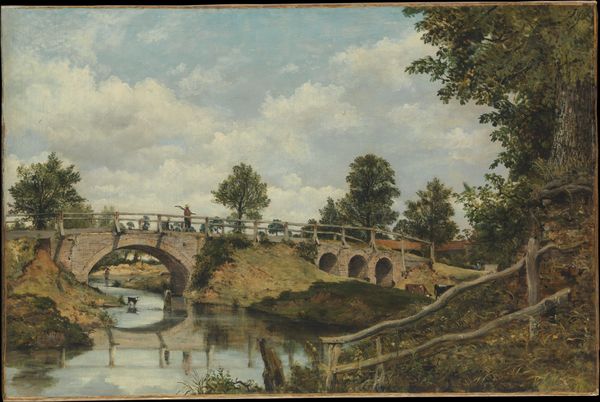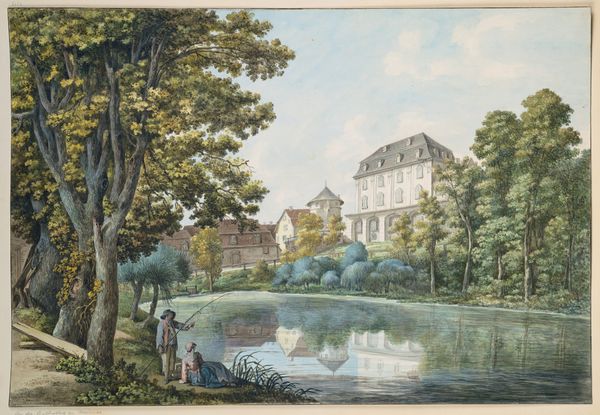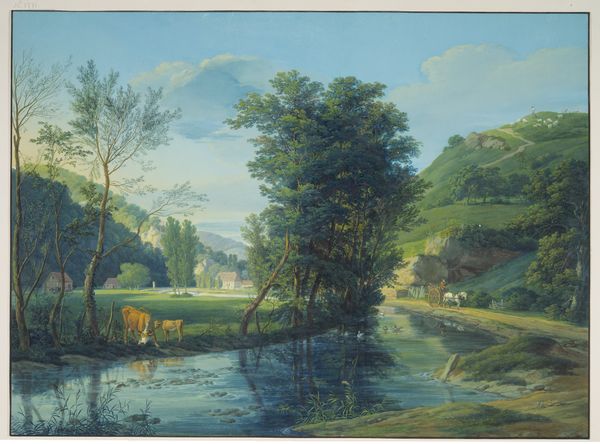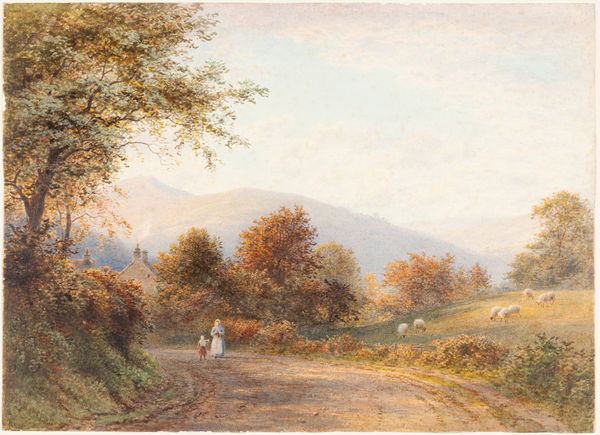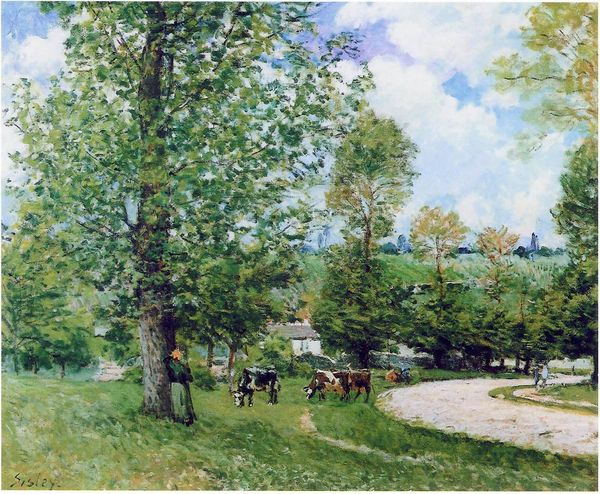
drawing, plein-air, watercolor
#
drawing
#
16_19th-century
#
plein-air
#
landscape
#
oil painting
#
watercolor
#
coloured pencil
#
romanticism
#
genre-painting
#
watercolor
Copyright: Public Domain
Curator: Let's spend a few moments with this beautiful watercolor and pencil work, "Park Landscape with Pond and Swans," created around 1850 by Karl von Müller, currently held in the Städel Museum's collection. Editor: My first impression? Serenity. The light is so soft; it almost feels like a half-remembered dream. It is like a staged leisure, almost a caricature. Curator: Yes, a bucolic fantasy! Consider the placement of the swans, these graceful, myth-laden birds often associated with purity and elegance, here almost like props in an idealized landscape. Their whiteness and graceful form are important. The pond is also acting like a mirror to reflect what is up. Editor: Absolutely. Swans have always been complicated figures, haven't they? Symbols of royalty, yes, but also subjects of fairy tales gone wrong. Looking at the way the women are posed so decoratively and wearing those ornate dresses – aren’t they embodying, in a way, the idea of the swan, simultaneously elegant and trapped? Curator: A fascinating interpretation! I am struck also by how the scene offers a sense of enclosure. The greenery frames the composition, subtly isolating these figures from the rest of the world. Consider how landscape traditions inform genre painting like this one. It evokes classical idyllic visions of pastoral leisure but simultaneously feels very particular to a specific social context in mid-19th-century Europe. Editor: Yes, the painting functions like a social stage! It does feel incredibly poised between those opposing concepts. There's beauty, of course, but also, I sense, a hint of tension, of a social order being both celebrated and perhaps unconsciously questioned. Is von Müller implying a certain…artificiality in this constructed paradise? What stories are not being told in this pretty painting? Curator: That contrast you point out resonates with a bigger struggle in artistic circles during the 19th Century to simultaneously embody and reflect change. Von Müller captured the aesthetic longings for Arcadia and hints to those longings’ limitations. Editor: Indeed, this idyllic image encourages critical contemplation. The watercolor asks the viewer to consider both art’s potential for romantic expression and its capacity to mirror the quiet restrictions that shaped social norms. It does feel very knowing, despite the charm of the imagery.
Comments
No comments
Be the first to comment and join the conversation on the ultimate creative platform.
